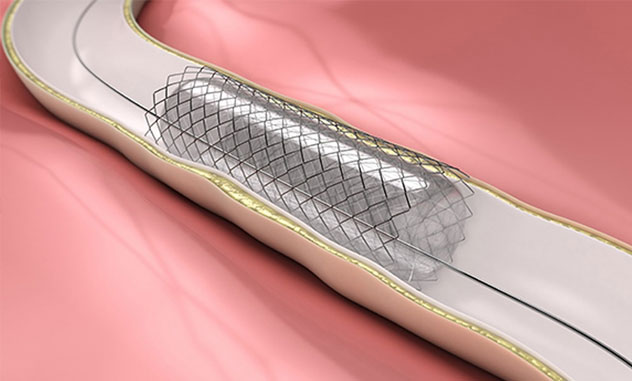
Vertebral Stenting
Vertebral artery stenting is an endovascular treatment which means it is performed through a blood vessel by a consultant interventional neuro-radiologist. The procedure is usually carried out under local anaesthetic. A stent is a tubular structure made with a highly precise metal mesh.Stents are usually made of nitinol (nickel and titanium alloy) or cobalt-chromium (cobalt and chromium alloy). They vary in length and diameter.
The stent is a permanent implant that opens up blocked or narrowed arteries which allows improved blood flow to the brain.
What happens during the procedure?
Vertebral artery stenting is a delicate procedure that may take a couple of hours or longer. During the procedure you will be closely monitored by Neurointervention
Local anaesthetic is injected through the skin and into the groin and a needle is then used to enter the artery. A wire can then be passed through the needle and then a catheter (a plastic tube) is inserted into the artery while under x-ray control.
The catheter is guided up to the carotid artery just below the narrowed area. Part of the catheter has a deflated medical balloon with a stent over it. The balloon and stent are carefully placed across the narrowed section of the carotid or vertebral artery. A balloon is then inflated, this helps to widen the artery and the stent then opens and embeds against the artery wall. There may be a brief discomfort in the neck but this usually goes away.
Once the stent is in place, the balloon is then deflated and removed. This will then leave the stent supporting the arterial wall. The catheter will then be removed and then pressure is applied to the groin area until bleeding has stopped. Sometimes a plug is used to help stop the bleeding.
What are the risks of stenting?
The procedure will be carried out unless the benefits outweigh any possible risks. You will have discussed the procedure and the risks associated with your neurologist/interventional neuroradiologist/neurosurgeon. You will have given your consent before you go ahead with the procedure.
Stroke or stoke-like symptoms such as weakness or numbness in an arm or leg, problems with speech
Bleeding/bruising - almost all patients have some bruising at the groin Sometimes damage to the arteries due to the catheter
